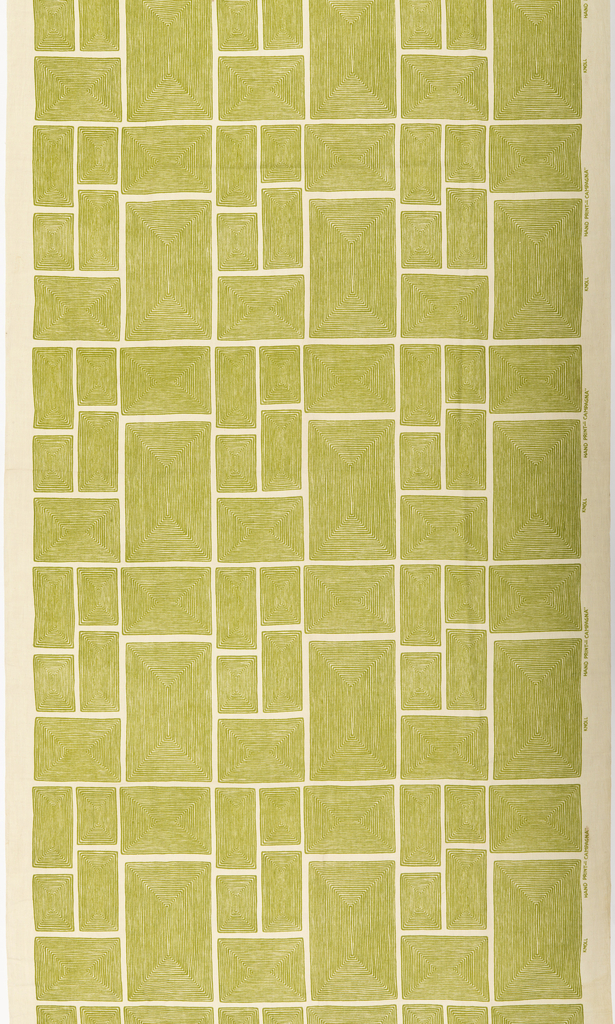Campagna, likely named after the designer Angelo Testa’s friend, Paul Campagna, epitomizes Testa’s design vocabulary. Designed in 1947 for Knoll Associates, Campagna utilizes Testa’s preferred linear and geometric forms, commonly associated with his Bauhaus training. The hard edges of the concentric rectangles in this textile, however, have been softened by their appearance of being almost hand-drawn.
This particular textile is one of the most well-known of Testa’s works and was published in many architecture and design journals of the day. It is indicative of his innovative work as one of the leading American textile designers of the 1940s and 1950s and represents an important moment in postwar America when textiles were a very calculated part of every modern interior.
Testa was one of the foremost American textile designers of the mid-20th century. In 1945, he was the first graduate of the Institute of Design (formerly the New Bauhaus) in Chicago, where he studied under the artist László Moholy-Nagy and the architect George Fred Keck. Although Testa worked primarily in the field of printed textiles, he was also widely known as a painter and sculptor. In 1947, he founded his own firm, Angelo Testa & Co., which remained active until his death in 1984. His clients included such major furniture companies as Knoll Associates and Herman Miller, as well as the textile firm, F. Schumacher & Co.
Testa made variations of Campagna, each also titled Campagna, one of which is in the museum’s collection (1948-119-5).
